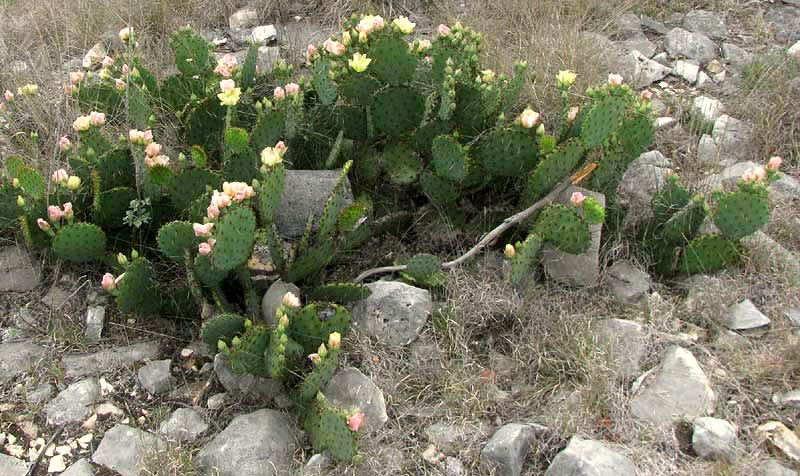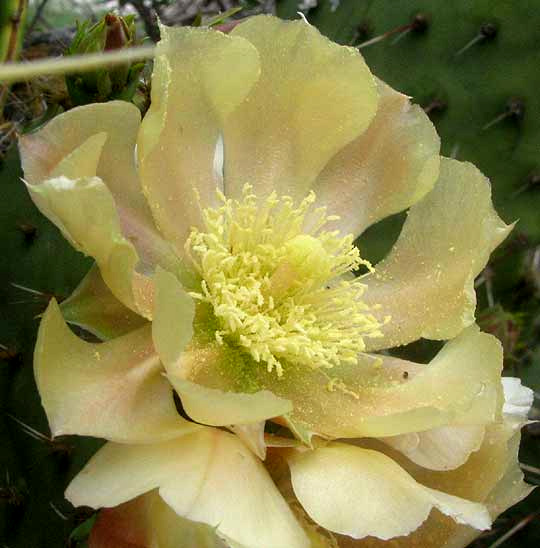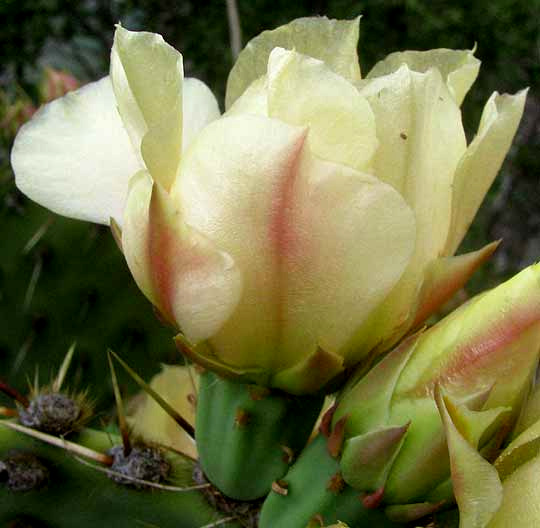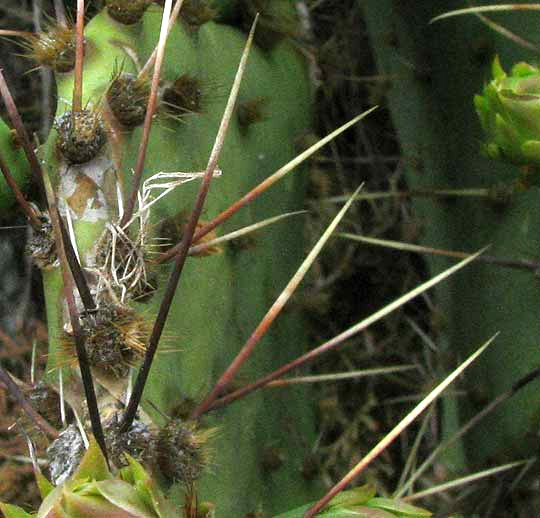Excerpts from Jim Conrad's
Naturalist Newsletter

from the April 7, 2013 Newsletter issued from the Frio Canyon Nature Education Center in northern Uvalde County, southwestern Texas, on the southern border of the Edwards Plateau; elevation ~1750m (~5750 ft); N29.62°, W99.86°; USA
SPRING'S FIRST FLOWERING PRICKLYPEAR
In thin, dry soil atop a limestone hill along the Frio River in northern Uvalde County, spring's first flowering pricklypear cactus has appeared, as shown above.
This was a wonderful find, not only because it's always a pleasure to see a robust plant at its flowering peak, but also because ever since I arrived I've been wondering if all the pricklypear cacti occurring in a wide variety of habitats here are the same adaptable species, or different species that can be distinguished only when flowers and/or fruits are available. The moment I saw this plant, despite its close similarity to other non-flowering ones in the valley below, I was pretty sure it was a different species.
For one thing, despite this cactus's abundant flowers, pricklypears on athe lower slopes of hills and in the valley -- which we've identified as Opuntia engelmannii -- don't even have well developed flower buds yet. Also: the individual green pads of this hilltop cactus seem slightly smaller than pads on cacti down below; the spots from which spines arise (areoles) are darker and closer together; the spines show less of a tendency to point downward than on the valley species, and; the spines themselves are dark but pale tipped, while most other cacti in our area produce yellowish spines. Also, notice than the blossoms in our picture range from pure yellow to pale pink.
A close-up of a typical blossom appears is shown below:

A side view of flowers showing some pinkness is seen below:

Below you can see that only one or two spines arise from most areoles, and that the spines themselves are black-brown at their bases but whitish at their tips:

Fortunately, the Cactus Family is treated in the online Flora of North America, so by "keying in" the above and other field marks I identified our hilltop cactus as OPUNTIA ATRISPINA, a species of such limited, narrowly endemic distribution that really it has no commonly accepted English name, though in the literature authors have made up names for it, such as the Border Pricklypear, Dark-spined Pricklypear, and Black and Yellow-spined Pricklypear.
So, this is a great find,a species known to occur naturally -- in the whole world -- only here in Uvalde County and two or three counties west of here, and a little bit of extreme northeastern Mexico.